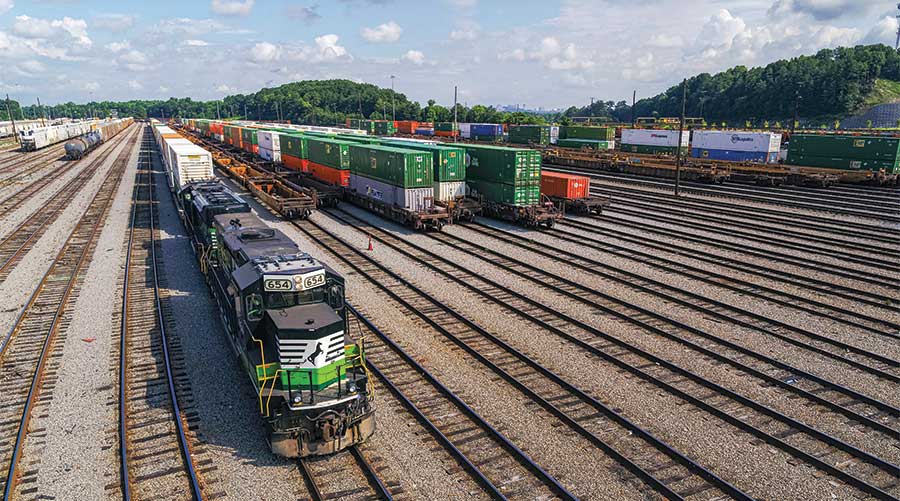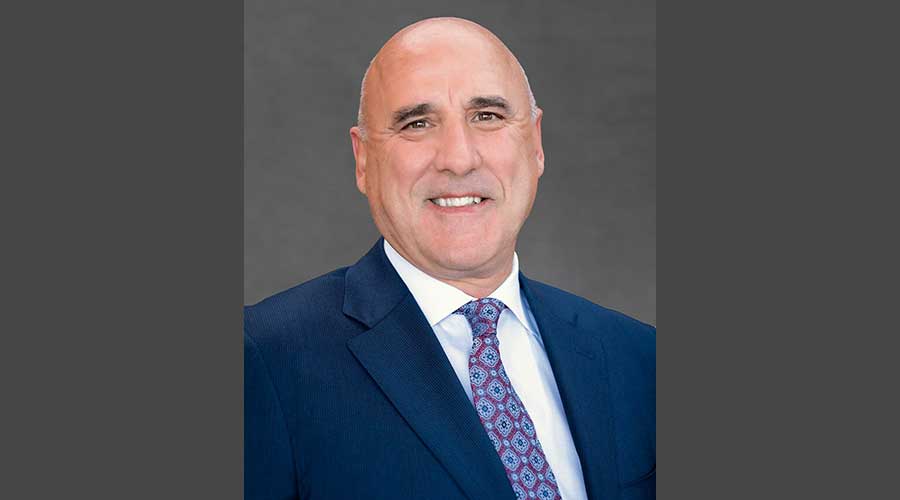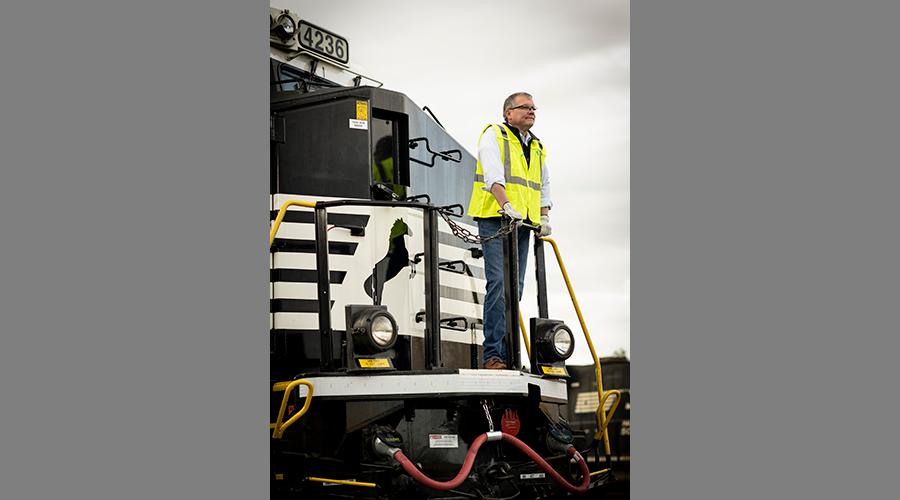Stay updated on news, articles and information for the rail industry
 railPrime
railPrime
March 2023
Rail News: Intermodal
With resilience railroading, NS seeks to head in a more customer-centric, always-solid-service direction
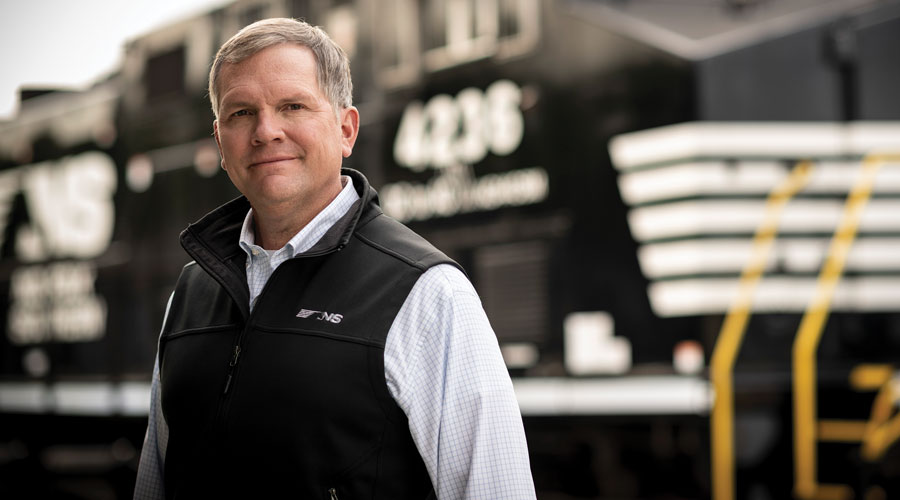
By Jeff Stagl, Managing Editor
Albert Einstein used his theory of relativity to prove some conventional wisdom could be contradicted by employing a lot of brainpower and math.
Similarly, Norfolk Southern Corp. aims to buck a longstanding rail industry tactic after applying much thought and crunching many numbers to develop an unconventional strategy dubbed resilience railroading.
Typically, railroads deal with economic downturns and unexpected events — which tend to cause sudden drops in demand followed by sudden traffic resurgences — by first furloughing a number of workers to cut costs, and then recalling them later when conditions improve. Over a short term, that common practice helps prevent an economic downturn, severe weather, pandemic, equipment shortage or other disruption from crippling expenses and the operating ratio (OR).
But NS’ brain trust late last year questioned whether that’s still the best approach as the company seeks to more sustainably grow, more ardently attract and satisfy customers, more thoughtfully develop the workforce, and more aggressively adopt technologies and pursue sustainability.
They determined it’s better to keep a steady headcount so service performance doesn’t vary. Plus, they believe it isn’t beneficial to be singularly focused on reducing the OR.
A year ago, NS’ operational performance was poor, so Job No. 1 has been restoring service, says NS President and CEO Alan Shaw. No strategy is going to help the company grow over the long term if the railroad can’t consistently perform at a high level, he stresses.
“We only manufacture one product: service. And we only sell one product: service. We need to get it right, and then hold it dearly,” says Shaw. “We have to build the credibility and confidence necessary for customers to incorporate NS into their supply chains.”
Resiliency isn’t just about avoiding furloughs or managing the effects of a disruption, such as NS’ train derailment Feb. 3 in East Palestine, Ohio, that led to a national outcry. It’s a broad set of balanced management approaches, Shaw says.
“It’s a mindset that’s comparable to and aligned with our balance between service, productivity and growth,” he says. “It also means incorporating time-honored principles such as simplicity, executability and a high degree of compliance.”
Since last year, NS has been integrating a new operating plan called TOP | SPG — with the latter three letters standing for service, productivity and growth — which is designed to help transform the railroad into a more customer-centric and operations-driven service organization.
Considered a modern version of precision scheduled railroading, TOP | SPG involves applying a data-driven approach to NS’ network to drive continuous performance improvements.
“We adjusted 90% of our train plans through TOP | SPG with a primary focus to balance assets and to drive the crew, locomotive, rail-car and terminal productivity that comes from that,” says NS Executive Vice President and Chief Operating Officer Paul Duncan.
Pivotal moment
While TOP | SPG is a big change, resilience railroading is a huge pivot that’s well suited for NS, the Class I’s leaders believe. The railroad’s network reaches about 60% of the U.S. population and 50% of the nation’s manufacturing output, with dense population centers only moderately distanced apart. In addition, NS partners with more short lines than any other North American railroad.
Moreover, the following trends are conducive for implementing resilience railroading: a shift in consumers’ habits to e-commerce, an ongoing transition from just-in-time to just-in-case inventory strategies, an acceleration of onshoring due to geopolitical and energy factors, and more and more shippers wanting to reduce their carbon footprints.
“This works for NS and makes sense for NS, but it might not work for others,” says Shaw.
The strategy in part calls for consistent investments in key resources to help reduce the volatility of capital investments and long-term strategic assets, such as locomotives, freight cars, track, intermodal terminals and workers.
For example, a number of conductors can be trained to become locomotive engineers during downturns so NS gains a more flexible workforce and better mix of talent, and more consistent/predictable time off can be incorporated into workers’ schedules.
“Changing our workforce strategy during economic downturns is going to help improve our relationship with our employees and improve their quality of life,” says Shaw.
Ultimately, NSers are counting on resilience railroading to help the Class I meet a key objective: landing a bigger share of the $860 billion flexible freight market — the fastest-growing truck and logistics sector in which shippers have several modal choices.
The pivot to resilience railroading can help generate what NS leaders characterize as “smart and sustainable growth” so shareholders can be rewarded in the form of higher earnings per share, returns on invested capital and revenue.
The math adds up
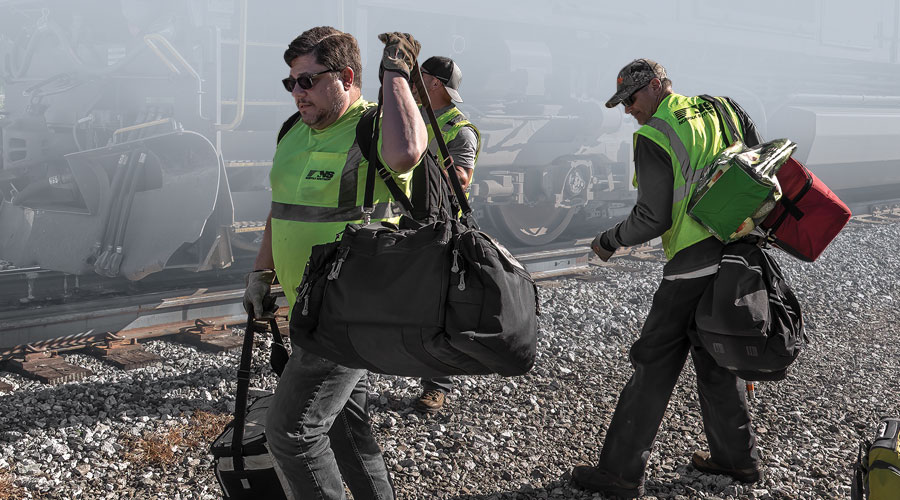
NS leaders are convinced they have the math to back it all up. Assuming the railroad’s volume drops 5% in a quarter because of a slow network, cargo worth $600 million would be lost in the period. And although the Class I could save about $35 million by furloughing workers, it would cost about $40 million to bring them back or to hire and train replacements. Plus, NS has found it costs $150 million per year in service recovery costs associated with a slower network.
The number-crunching was quite an aha moment for Shaw, a 29-year NS veteran who served stints as group vice president of chemicals, VP of intermodal operations and chief marketing officer prior to becoming the Class I’s leader in May 2022. He long believed there was a better way to go.
“I’m an engineer by training. I earned my chartered financial analyst designation. To me, the numbers matter,” says Shaw. “The math confirmed what I thought.”
Resilience railroading also was confirmed late last year via a process through which the strategy was analyzed as a hypothesis under various real-world scenarios.
“We modeled scenarios for 10-year periods and it all held up,” says Shaw.
NS executives then talked to a number of customers. Many said that if the Class I’s service became that much more reliable, they would use the railroad more, Shaw says.
Recent service metrics show NS’ performance is steadily improving. As of Jan. 20, average train speed reached 22.2 mph versus 17.5 mph in second-quarter 2022 and 20.7 mph in fourth-quarter 2022. Average terminal dwell time stood at 23.6 hours on Jan. 20 compared with 27.2 hours and 25.3 hours in last year’s Q2 and Q4, respectively.
Once velocity started to pick up last year, the productivity of locomotives and rail cars began to improve at an increasing rate, says COO Duncan.
“This year will be focused on safely executing reliable and resilient service on our network [and] on continuing to increase the productivity in our bulk network to lower unit-train cycle times and maximize tonnage hauled,” he says.
For Duncan, railroading is a momentum business. But sometimes, momentum can unexpectedly be interrupted. The attention on resilience railroading was diverted last month by the East Palestine, Ohio, derailment, which damaged property, started a fire and spilled hazardous materials, but resulted in no fatalities or injuries.
However, the nature and extent of the accident — which caused home evacuations and troubling environmental impacts — infuriated many local residents, drew negative national media attention and public scrutiny, and prompted Ohio Gov. Mike DeWine and several congressional leaders to question hazmat rail safety. Moreover, some media reports on the accident included misinformation and the U.S. Department of Transportation unveiled several related measures all freight railroads must adopt, including ones they already were implementing or oppose, such as two-person crews.
[Editor's note: There have been many additional developments associated with the NS derailment in East Palestine and other accidents since this cover story was published. Read Progressive Railroading's Daily News or log onto our website's home page to keep up with the latest.]
Then, minor NS train derailments occurred Feb. 16 in Van Buren Township, Michigan, and Feb. 25 in Lexington, North Carolina. Although railroads are increasing efforts to prevent derailments by employing more technologies and improving more safety processes, such accidents still occur. That, in part, is why NS is embracing resilience railroading.
All things large and small
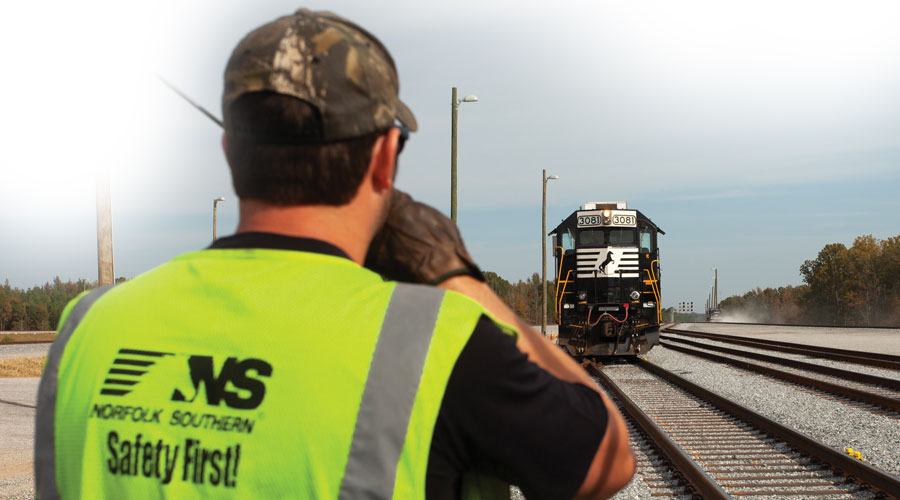
The major and minor disruptions a railroad can encounter are targeted by the “big R” and “little R” of resilience, says NS EVP and Chief Transformation Officer Annie Adams.
Little R focuses on such day-to-day occurrences as train accidents, severe weather and sudden volume surges that can have ripple effects on fluidity. NS aims to improve decision-making and target some investments to be able to respond to such events in a way that avoids service fluctuations, says Adams.
Meanwhile, Big R concentrates on the larger service implications of economic downturns. The aim: to avoid always being behind the service performance curve with furloughs.
“We want to add on a layer of resilience to earn customers’ trust, and to be reliable and consistent at all times across all economic cycles,” says Adams.
There is an immediate costly hit to the OR because of resilience railroading and the operational changes it demands, but the strategy’s upside far outweighs its minuses, she says.
As for the old reliant furlough model, it doesn’t work anymore because the pandemic accelerated a shift in how people view their jobs, Adams stresses. Many people won’t wait for a callback because they have other job opportunities and highly value a better quality of life.
NS’ data science and operations research teams are working with subject matter experts in marketing, operations, human resources and labor relations to continue developing a new workforce model.
Designed to better integrate customer demand forecasts with workforce planning, the model will leverage predictive analytics so staffing needs can be continuously forecast at each of the railroad’s unique 95 hiring locations, says Adams. Each location has certain nuances that call for tailored hiring processes.
“With improved visibility into future staffing needs, we’ll be smarter about how we can allocate resources that contribute to continuous productivity improvements, and we’ll be better prepared to handle new business and surges in demand,” says Adams. “Better forecasting also will provide critical insights into staffing across economic conditions.”
NS also is striving to modernize labor agreements to drive flexibility in operations, bolster reliability for customers and improve employees’ quality of life, she says. The major goal: to provide workers more schedule predictability.
For example, the Class I is negotiating a contract with its conductors that includes scheduled days off — a quality-of-life game changer, Adams believes.
“It will be a regular shift-based job with regular rest days,” she says.
Like other Class Is, NS also is negotiating union contracts that include paid sick time. Plus, the railroad is working to redeploy conductors from locomotive-cab to ground-based positions through which they cover a geographic territory from a company vehicle or work at a customer facility.
“For our customers, prepositioning our conductors at their facilities can offer more efficient service, and for our conductors, these jobs will provide much more predictable schedules,” says Adams.
Service, front and center
As for shippers, many of them will need time to be convinced that NS’ service is much more predictable and reliable. Some have long memories about poor service, says NS Group VP of Chemicals Meghan Achimasi.
“We need to put customers and service front and center,” she says. “We can prove the simplicity and efficiencies that rail brings to supply chains.”
One recurring challenge in that regard is that many shippers know trucking well but are not well versed in rail. To that end, NS is trying to provide more application programming interfaces. Considered ease-of-doing-business tools, APIs enable users to access data and interact with external software components, operating systems or microservices.
For example, the Class I offers a trip plan API that provides a current estimated time of arrival (ETA) and planned and completed movement events for each shipment, and a shipment status API that provides a shipment’s current location, ETA and basic waybill data.
NS also is the driver behind RailPulse, a coalition of rail-car owners aiming to accelerate the adoption of GPS and other telematics technology across the North American rail-car network to increase shipment visibility, efficiency and safety. Coalition partners are creating a new rail-car telematics technology platform designed to transform rail shipping and enhance a rail customer’s experience.
RailPulse and APIs can help convince shippers to build supply chains around NS, says Achimasi.
“We try to use data and facts to overcome a customer,” she says. “We show the value proposition we can bring with lower transportation costs and lower carbon emissions.”
Opportunities abound
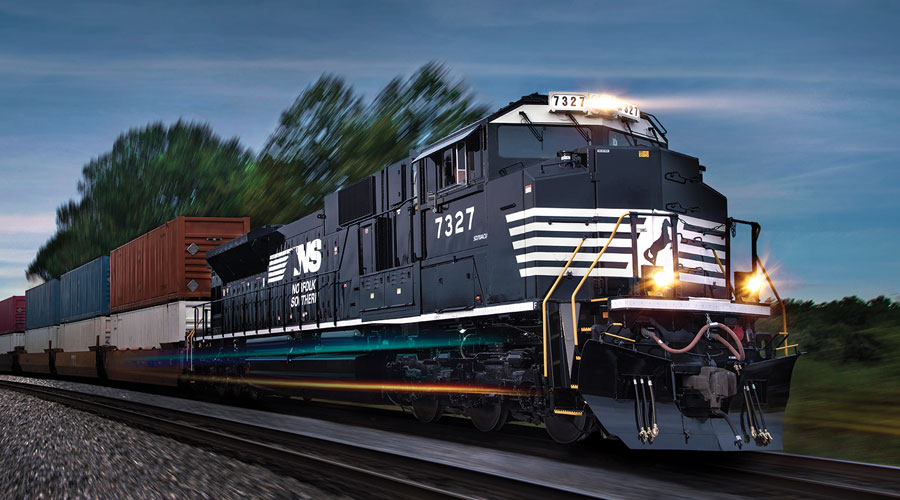
The encouraging news is there are pockets of traffic-building opportunities for NS to pursue in just about every commodity group, from consumer goods to steel to paper to chemicals to plastics. Gaining bigger chunks at times calls for taking a more experimental approach, such as by dedicating more capacity to a certain shipper, says Achimasi.
“We tell customers, ‘Give us a shot,’” she says.
NS also is trying to provide more carload intermodal and transload services to build business. Carload intermodal involves the Thoroughbred Freight Transfer less-than-truckload service launched several years ago. Trucks pick up small loads and deliver them to a NS-served warehouse for transfers into box cars, which are placed on intermodal trains. Trucks then deliver loads at a destination.
To provide the service customers need and expect, NS strives to focus on balancing the network well, maintaining velocity and delivering on service promises, says NS VP of Network Planning and Optimization Jacob Elium.
Targeting business that factors into smart growth is paramount, too.
“We’re not going to be moving fresh flowers from California,” says Elium.
What the Class I can do is try to demonstrate flexibility. For example, NS recently extended the length of some trains from 130 to 200 cars to help a shipper transport its coal to an export facility numerous times per week, says Elium.
To grow, NS can’t just be a bulk commodity and box-car railroad, says CEO Shaw. He’s convinced the trucked and service-sensitive freight is where the growth is.
With resilience railroading, NS can better pursue that business, given service performance is up to snuff. The company has found a faster railroad is a less expensive railroad since it takes less track, yard space and other infrastructure to handle growing volumes, says Shaw.
The most exciting thing about resilience railroading is that it’s a strategy that resonates with all stakeholders, including customers, investors, employees and regulators, says Achimasi.
“The message is the message. It doesn’t need to be adapted to any one group,” she says. “Plus, the long-term focus of it is very appealing.”
Email questions or comments to jeff.stagl@tradepress.com.


 LRW Honors Amtrak’s Acheson As Railway Woman Of The Year
LRW Honors Amtrak’s Acheson As Railway Woman Of The Year
 From Editor-In-Chief Foran: Of Gender Equity And Inclusion
From Editor-In-Chief Foran: Of Gender Equity And Inclusion
 Spotlight On Some Of Today’s Rail Safety Products
Spotlight On Some Of Today’s Rail Safety Products
 Women of Influence in Rail eBook
Women of Influence in Rail eBook





